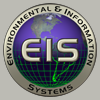
|
Robert Carr Principal Engineer rjcarr@apl.washington.edu Phone 206-616-1470 |
Research Interests
Software Development, Image Processing, Data Driven Web Programming
Biosketch
Robert Carr joined the Laboratory's Multimedia Development Team in 2002, and has contributed expertise in many areas. He has worked on user interface designs, Web layouts, Web animations, Web service programming, map and map projection programming, servlet programming, and 3D programming.
Department Affiliation
 |
Environmental & Information Systems |
Education
B.S. Computer Science, University of Washington, 2001
|
Publications |
2000-present and while at APL-UW |
An expansion of glider observation strategies to systematically transmit and analyze preferred waypoints of underwater gliders Smedstad, L.F., and 9 others including R.J. Carr, "An expansion of glider observation strategies to systematically transmit and analyze preferred waypoints of underwater gliders," Proc. SPIE, 9459, 94590J, doi:10.1117/12.2176560, 2015. |
More Info |
19 May 2015 |
|||||||
|
The Glider Observation STrategies (GOST) system provides real-time assistance to ocean glider pilots by suggesting preferred ocean glider waypoints based on ocean forecasts and their uncertainties. Restrictions on waterspace, preferred operational areas, and other glider trajectories are also taken into account. Using existing operational regional Navy Coastal Ocean Model (RNCOM) output, demonstrations of glider waypoint calculation are ongoing in Navy operational areas. After the ocean forecast models and GOST components run at the Navy DoD Supercomputing Resource Center (Navy DSRC), GOST-suggested glider paths are transferred to the Glider Operations Center (GOC). The glider pilots at the GOC import this information into their Unmanned Systems Interface (USI), developed at the University of Washington, Applied Physics Laboratory (APL-UW) to evaluate the suggested glider paths, make adjustments, and update waypoints for the gliders. The waypoints being sent are visualized and analyzed using graphic capabilities to convey guidance uncertainty developed under a grant to the University of New Orleans (UNO) and added under the Environmental Measurements Path Planner (EMPath) system within GOST. USI forwards automatic messages from the gliders with recent glider location, speed, and depth to GOST for the next cycle. Over the course of these demonstrations, capabilities were added or modified including use of initial glider bearing, preferred path, refinement of glider turn frequency, correction of glider speed, and introduction of glider rendezvous locations. Automation has been added with help from the modeling group at the Naval Oceanographic Office (NAVOCEANO). GOST supports NAVOCEANO%u2019s ongoing efforts to direct and recover gliders, to safely navigate in changing ocean conditions, and to provide feedback to improve ocean model prediction. |
|||||||||
Operational glider monitoring, piloting and communications Mensi, B., R. Rowe, S. Dees, D. Bryant, D. Jones, and R. Carr, "Operational glider monitoring, piloting and communications," Proc., Ocean Engineering Society - IEEE Autonomous Underwater Vehicles, 6-9 October, Oxford, MS (OES-IEEE, 2014). |
More Info |
6 Oct 2014 |
|||||||
|
The Glider Operations Center (GOC) at the Naval Oceanographic Office (NAVOCEANO) is responsible for operating a fleet of autonomous unmanned systems, including ocean gliders, in the collection of physical oceanography data. The data collected include ocean temperature, salinity, and optical properties, which are profiled at depth and used by ocean modelers to forecast future environmental ocean conditions. NAVOCEANO then provides these forecasts in near-real time to support strategic, operational, and tactical Navy fleet requirements and activities. |
|||||||||




